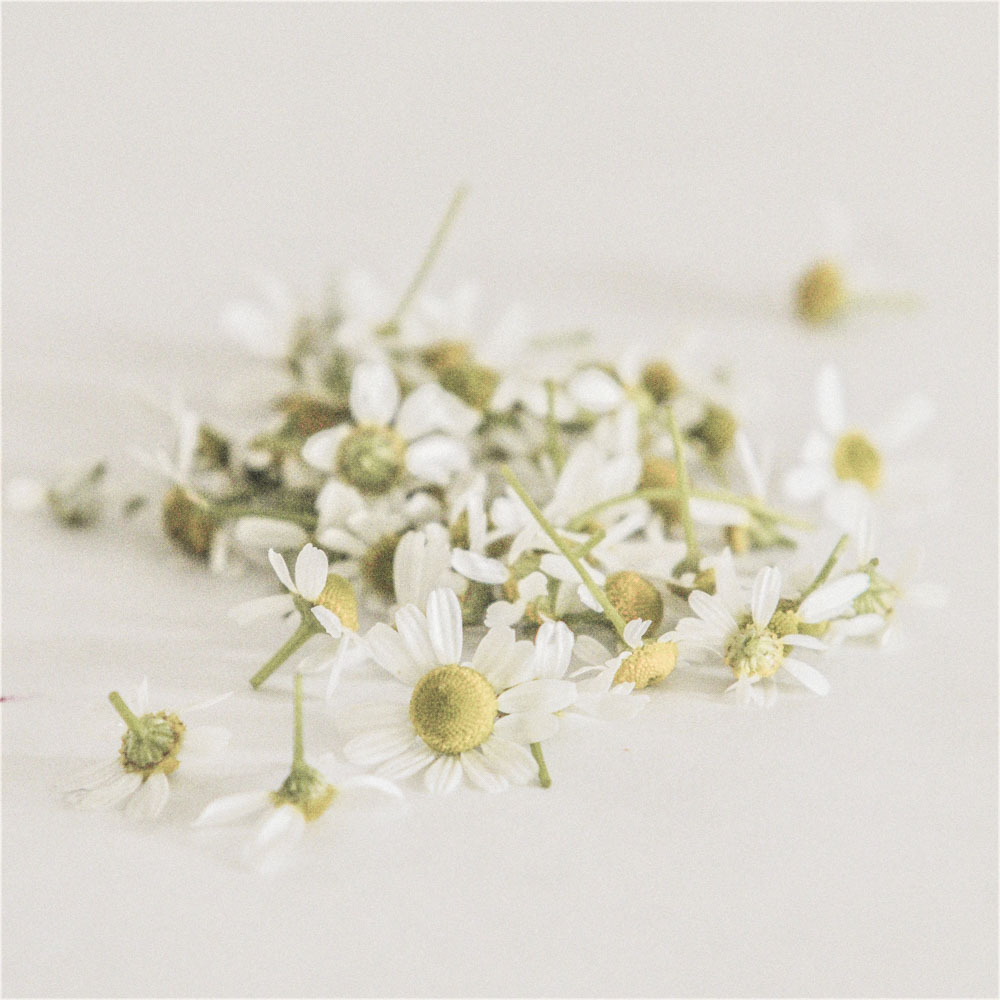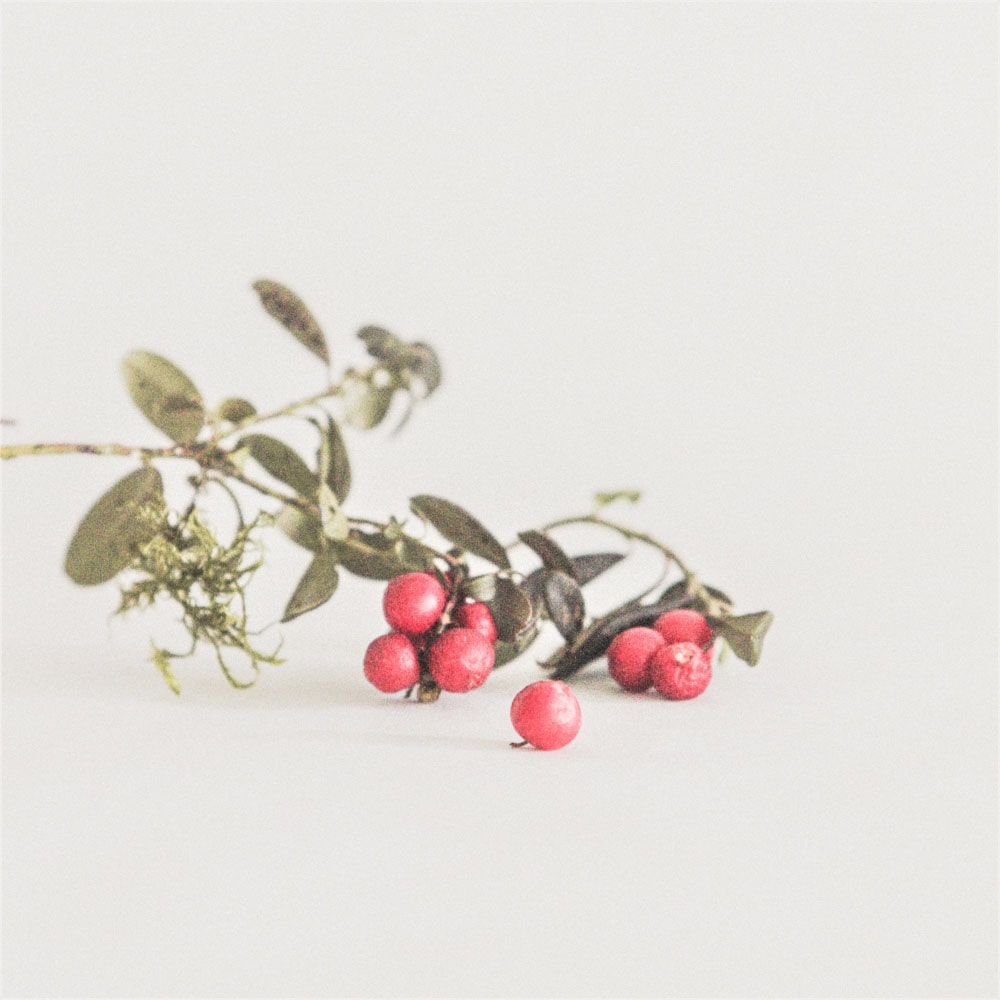Chamomile
Matricaria Chamomilla Flower Extract

Are you on the hunt for a natural ingredient to enhance your skincare routine? Meet your new skincare bestie: chamomile! Chamomile has been used for centuries as a healing herb to treat many ailments, including skin conditions. In this guide, we’ll explore the benefits of chamomile in skincare, its nutrients, example use cases, side effects, and frequently asked questions.
Scroll down to read
What Is Chamomile?
Chamomile is a flower native to Asia, Europe, Australia, and North America that has been used by the Egyptians, Romans, and Greeks to treat many conditions and illnesses. They believed it could help cure illnesses, which is why ancient Egyptians dedicated chamomile to the gods. Romans used chamomile in incense and as a healing beverage.
Most of the studies on chamomile as a skincare ingredient occurred in Germany using chamomile as a topical ointment or cream. One impressive study demonstrated chamomile was more than half as effective as a .25% hydrocortisone cream when applied topically.
Benefits of Chamomile in Skincare
Chamomile has anti-inflammatory, antifungal, antibacterial, and antiseptic properties, and contains essential oils and antioxidants. Chamomile is hypoallergenic and helps reduce skin irritants by neutralizing free radicals. Here are the benefits that chamomile has when used as part of a regular skincare routine:
Great for Acne-Prone Skin
Because chamomile has anti-inflammatory properties, it’s great for acne-prone skin. Chamomile can be used as a mild astringent, effectively drying out your acne and causing redness and inflammation to minimize. It also gently kills bacteria, fights hyperpigmentation and red spots, and protects the skin from free radical damage. All of this can lead to healthier, blemish-free skin.
Contains Many Important Properties
Chamomile contains antifungal, antibacterial, antiseptic, and antioxidant properties. All of these properties work together to revitalize and improve the health of your skin.
Wound Healing
The essential oils found in chamomile reportedly contain anti-microbial properties that protect the skin against certain kinds of viruses, fungi, and bacteria. A 2018 study found that ointment containing chamomile extract significantly improved the antibacterial and healing activity of infected wounds in rats. In fact, the Germany Commission E, a group of medical professionals who determine the safety of products in Germany, approved chamomile for the treatment of bacterial skin diseases. If you have a wound that’s having trouble healing, chamomile may be the answer.
Anti-Aging
Chamomile also has anti-aging properties. Free radicals, which are cells in the environment, can damage skin and lead to premature aging. Antioxidants, which are found in chamomile, can fight these free radicals. Polyphenols and phytochemicals are two powerful antioxidants found in chamomile that can fight the aging process. These antioxidants accelerate cell and tissue renewal, helping to reduce the appearance of fine lines and give your skin a natural glow.
Lightens Skin and Fights Hyperpigmentation
Chamomile is a skin lightener that promotes a healthy glow by healing and restoring the skin’s natural moisture content. With its astringent and brightening properties, chamomile can tighten your pores, soften your skin, and reduce hyperpigmentation from acne scars and other issues.
Increases the Effectiveness of Other Skincare Products
Chamomile can increase the effectiveness of other skincare products. Whether it’s a serum or a moisturizer, adding chamomile can help these products penetrate the skin more effectively.
What Nutrients Does Chamomile Contain?
Chamomile contains many beneficial compounds and nutrients, including alpha-bisabolol, chamazulene, flavonoids, and coumarin. Alpha-bisabolol is known for its anti-inflammatory properties, while chamazulene is a powerful anti-allergen. Flavonoids are antioxidants that help protect the skin from free radicals, and coumarin helps improve skin tone.
Alpha-bisabolol
This is a natural anti-inflammatory compound that helps soothe and calm the skin. It also has anti-irritant properties that can reduce redness and inflammation.
Chamazulene
This compound is responsible for the blue color in chamomile oil and is known for its anti-allergenic properties. Chamazulene has been shown to have a calming effect on the skin and can help reduce the appearance of redness and inflammation.
Flavonoids
Chamomile contains several flavonoids, including apigenin, quercetin, patuletin, and luteolin. Flavonoids are antioxidants that help protect the skin from free radicals, which can damage the skin and accelerate the aging process. They can also help reduce inflammation and soothe the skin.
Coumarin
This is a phytochemical that is found in many plants, including chamomile. Coumarin has been shown to have anti-inflammatory properties and can help improve skin tone.
Overall, the combination of these beneficial compounds and nutrients in chamomile makes it a popular ingredient in skincare products. Chamomile can help soothe and calm the skin, reduce inflammation, protect against free radicals, and improve skin tone, among other benefits.
Example Use Cases of Chamomile in Skincare
Chamomile can be incorporated into skincare routines in several ways. Here are a few examples:
- Chamomile tea: Brew a cup of chamomile tea, let it cool, and then apply it to your face using a cotton ball. The tea can help soothe inflamed skin, reduce redness and irritation, and tighten pores.
- Chamomile oil: Chamomile oil can be added to your favorite moisturizer or used as a spot treatment for blemishes. It can help reduce inflammation, soothe irritated skin, and promote wound healing.
- Chamomile-infused water: Infuse a bowl of water with chamomile tea bags and use it as a facial rinse after cleansing. This can help calm and soothe the skin, as well as provide anti-inflammatory benefits.
How to Use Chamomile
Chamomile can be used in a variety of ways, depending on the desired benefits. Here are a few ways to incorporate chamomile into your skincare routine:
- As a toner: Brew a cup of chamomile tea, let it cool, and then use it as a toner after cleansing. This can help tighten pores and soothe the skin.
- As a mask: Mix chamomile tea with honey and apply it to the face as a mask. This can help hydrate and soothe the skin, as well as provide anti-inflammatory benefits.
- As a spot treatment: Apply a drop of chamomile oil directly to blemishes to help reduce inflammation and promote healing.
Chamomile Side Effects
Chamomile is generally considered safe for topical use, but it can cause allergic reactions in some individuals. If you have a history of allergies, it’s best to patch test a small area of skin before using chamomile products on your face.
Additionally, chamomile should not be ingested in large quantities as it can cause nausea, vomiting, and other gastrointestinal issues. Pregnant women should also avoid chamomile as it may cause uterine contractions.
Frequently Asked Questions
Can chamomile be used on sensitive skin?
Yes, chamomile is gentle and hypoallergenic, making it a great choice for those with sensitive skin.
Can chamomile help with eczema?
Yes, chamomile’s anti-inflammatory and wound-healing properties can help soothe eczema flare-ups.
Can chamomile be used on oily skin?
Yes, chamomile’s astringent properties can help control excess oil production and reduce the appearance of pores.
Recap
In summary, chamomile is a powerful ingredient in skincare that offers many benefits, including anti-inflammatory, antifungal, antibacterial, and antiseptic properties, as well as essential oils and antioxidants. It’s great for acne-prone skin, wound healing, anti-aging, lightening the skin, and increasing the effectiveness of other skincare products.
Chamomile can be used in a variety of ways, such as in teas, oils, and infusions, and can be incorporated into toners, masks, and spot treatments. However, it’s important to patch test and avoid ingesting large quantities of chamomile.
By adding chamomile to your skincare routine, you can achieve healthier, more radiant-looking skin.
Further reading

Arctic Lingonberry Seed Oil
If you haven't heard of arctic lingonberry seed oil yet, you're in for a treat. This superfruit, produced by low, evergreen shrubs throughout Scandinavia's forests, has been used for centuries for its health-promoting properties and is now gaining popularity in the beauty industry. But did you know that it also has incredible benefits for your skin? In this guide, we will dive into the benefits and uses of Arctic Lingonberry Seed Oil in skincare.
Continue reading
Sea Buckthorn Oil
You're probably constantly on the lookout for new and innovative skincare ingredients that can help you achieve the glowing, radiant complexion you've always wanted. One such ingredient that's been making waves in the skincare industry is sea buckthorn oil. In this comprehensive guide, we'll take a closer look at what sea buckthorn oil is, its history, how it feels on the skin, comedogenic rating, benefits for your skin, nutrients, and compounds it contains, and how you can incorporate it into your skincare routine.
Continue reading
Calendula
In this article, I will explain what Calendula is, its historical uses, the benefits of using Calendula in skincare, the nutrients it contains, and example use cases. By the end of this article, you will have a better understanding of how Calendula can benefit your skin and why it is an ingredient worth incorporating into your skincare routine.
Continue reading